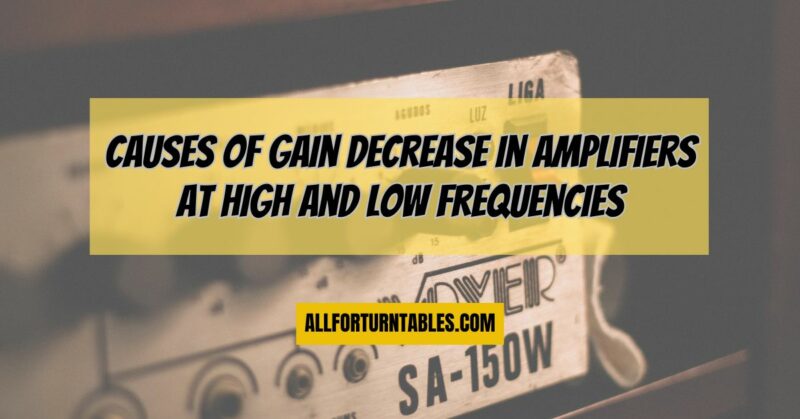Amplifiers are the backbone of modern electronics, making our devices louder and clearer. But have you ever wondered why the gain of an amplifier seems to decrease at both high and low frequencies? In this beginner-friendly guide, crafted for those aged 18-38, we’ll demystify the causes behind this phenomenon. We’ll explore the factors that influence amplifier gain, understand why voltage gain drops at low frequencies in the Common Emitter (CE) configuration, examine how amplifiers behave at different frequency ranges, and learn about the types of feedback that can reduce amplifier gain.
Why Does the Gain of an Amplifier Decrease at Low and High Frequencies?
The gain of an amplifier is like a superhero that boosts weak signals. However, this superhero has its limits:
- At Low Frequencies: The gain decreases because of capacitors. As the frequency decreases, capacitors start to block or resist the flow of signals. This causes a drop in gain because the signals can’t get through as easily.
- At High Frequencies: The gain decreases due to the internal capacitance and inductance of the amplifier components. These components start to act like filters, allowing only certain frequencies to pass through, while blocking others. This selective behavior reduces the overall gain at high frequencies.
What Factors Affect the Gain of an Amplifier?
Several factors influence amplifier gain:
- Component Values: The values of the resistors, capacitors, and inductors used in the amplifier circuit can impact gain.
- Operating Conditions: Temperature and voltage variations can affect gain.
- Frequency: As we discussed, the frequency of the input signal is a critical factor.
- Feedback: The type of feedback applied to the amplifier circuit can either increase or decrease gain.
Why Does Voltage Gain Decrease at Low Frequencies in CE Configuration?
In a Common Emitter (CE) configuration, voltage gain decreases at low frequencies due to the coupling capacitors. These capacitors are like traffic controllers that allow high-frequency signals to pass through but block low-frequency ones. As a result, the gain is reduced at lower frequencies.
How Does the Amplifier Act at Different Frequencies?
Amplifiers behave differently at various frequency ranges:
- Low Frequencies: Gain decreases due to the blocking effect of coupling capacitors.
- Mid Frequencies: This is where amplifiers typically provide their highest gain. They work well within this range.
- High Frequencies: Gain decreases due to the internal capacitance and inductance of components.
Which Feedback Decreases the Gain of the Amplifier?
Negative feedback is the type of feedback that decreases the gain of an amplifier. It does this by taking a portion of the output signal, inverting it, and feeding it back into the input. This feedback helps control the amplifier’s gain and reduces distortion.
In summary, the gain of an amplifier can decrease at both high and low frequencies due to various factors, including the influence of capacitors and internal component characteristics. Amplifiers are superheroes, but even superheroes have their limits. Understanding these factors and the effects of feedback is crucial for designing and using amplifiers effectively in electronic circuits. Whether you’re building a radio, designing a sound system, or just curious about how amplifiers work, this knowledge will serve you well in the world of electronics.


